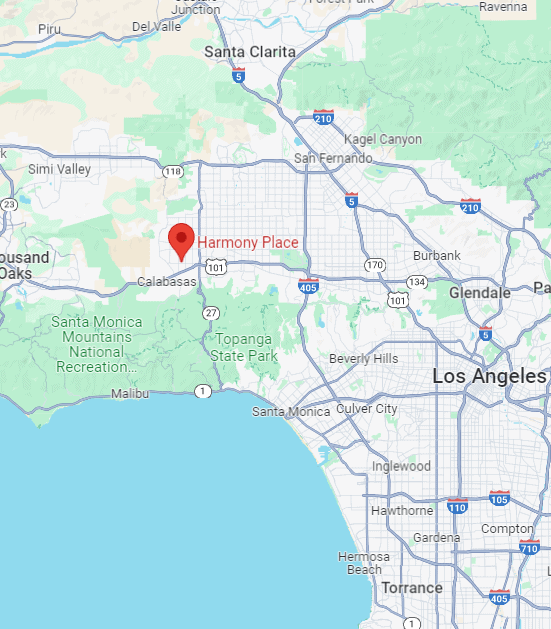Multiplan Insurance Rehab Coverage for Addiction in Los Angeles, CA
Harmony Place, located in Los Angeles, California, is ideal for those seeking specialized care for drug and alcohol addiction. With a commitment to holistic healing and evidence-based practices, Harmony Place provides comprehensive rehabilitation services to support you on your journey to recovery.
Harmony Place prioritizes the well-being of its clients and understands the importance of accessible and affordable care. The facility also accepts various health insurance plans to make rehabilitation services more widely available. Among the accepted insurance options, Harmony Place may also welcome coverage from Multiplan, a network that includes addiction treatment. Reach out today to learn about the extent of Multiplan insurance rehab coverage. The dedicated staff at Harmony Place are ready to assist and provide the necessary information to help plan your rehabilitation journey.
Who Is Multiplan Health Insurance in Southern California?
Founded in 1980, Multiplan insurance is a seasoned expert in addiction treatment coverage near Los Angeles, with over four decades of experience. This company is known for its commitment to healthcare cost management solutions, with a comprehensive network that facilitates access to quality addiction treatment services. Multiplan is a trusted resource for people navigating the complexities of recovery.
The company has continuously expanded its network, providing diverse and effective healthcare solutions. Offering an array of products and services, Multiplan is at the forefront of supporting individuals on their journey to recovery, providing accessibility and quality addiction treatment services for the Los Angeles community and beyond.
Some Multiplan Brands, Products and Services
Multiplan, a prominent player in healthcare cost management, offers a diverse assortment of brands, products, and services designed to streamline and enhance the healthcare experience. Here are some key Multiplan offerings:
- PHCS (Private Healthcare Systems): PHCS, a Multiplan subsidiary, provides a vast PPO network, offering flexibility and accessibility for those seeking healthcare services.
- Beech Street: Under the Multiplan umbrella, Beech Street focuses on delivering cost-effective solutions through its extensive network of healthcare providers, ensuring quality care for its members.
- MultiPlan Network: MultiPlan Network is a cornerstone product featuring a broad provider network to simplify efficient and affordable access to various healthcare services.
- ValuePoint by MultiPlan: ValuePoint emphasizes innovative solutions, employing advanced analytics to enhance cost management and improve the overall value of healthcare services.
- HealthEOS by MultiPlan: HealthEOS combines technology and expertise to deliver solutions that optimize the healthcare journey, focusing on cost-effective and quality-driven outcomes.
- Multiplan Repricing: Multiplan’s repricing services focus on negotiating and adjusting healthcare fees, contributing to cost containment, and facilitating fair and transparent billing practices.
- Multiplan Analytics: Multiplan Analytics provides insights and data-driven solutions to enhance decision-making processes within the healthcare industry.
Multiplan Health Insurance Explained in Southern California
Multiplan health insurance is a cornerstone in Southern California’s healthcare ecosystem, delivering a broad spectrum of services to optimize the healthcare experience. Through subsidiaries like PHCS and Beech Street, Multiplan has an expansive network, providing flexibility and affordability for individuals seeking medical services. The company ensures accessible and quality healthcare for people across the region.
Multiplan health insurance fosters a network that grants people access to diverse medical services. The company actively contributes to fair billing practices and cost-effective healthcare solutions through repricing services and advanced analytics provided by initiatives like Multiplan Analytics. Multiplan’s presence in Southern California embodies a commitment to transparency and innovation, making it an invaluable resource for people seeking reliable and affordable healthcare coverage.
Multiplan Healthcare Services Explained in Southern California
Multiplan healthcare offers a variety of services to enhance the healthcare landscape. Through its subsidiaries, Multiplan has an extensive network of healthcare providers, ensuring individuals can access diverse medical services. The company’s commitment to cost management is seen in initiatives such as ValuePoint, which leverages advanced analytics to optimize healthcare costs and improve overall value.
In Southern California, Multiplan healthcare services promotes efficient and accessible healthcare solutions. Through its multifaceted approach, Multiplan actively promotes a culture of transparency, innovation, and affordability for people seeking reliable and cost-effective healthcare services in the region. At Harmony Place, we can work with your Multiplan insurance and help you reach sobriety and behavioral health.
What Is Multiplan Insurance Rehab Coverage in Los Angeles, California?
Multiplan insurance is a valuable resource for rehab coverage in Southern California ensuring people can access a diverse network of facilities, particularly in key areas like Los Angeles. This network allows you to choose rehab services that align with your specific needs, creating a personalized approach to addiction treatment.
Multiplan insurance is a reliable partner in navigating addiction treatment coverage, prioritizing quality and affordability. The company’s dedication ensures people can access the necessary support for their recovery journey. Here at Harmony Place, we work closely with Multiplan insurance to get you the resources you need to recover from addiction.

We Will Check Your MultiPlan Insurance
Does Multiplan Insurance Cover Inpatient Rehab Programs in Los Angeles?
Do MultiPlan cover rehab? Yes, they typically cover inpatient rehab specifically for substance addiction. People can access facilities like Harmony Place, specializing in alcohol and drug rehabilitation, ensuring a spectrum of comprehensive and personalized inpatient treatment options with financial support. Multiplan ensures that you can receive tailored support for effective rehab for substance addiction.
Navigating the complexities of substance addiction, Multiplan’s coverage for inpatient rehab in Los Angeles emphasizes the importance of individualized care. The comprehensive nature of Multiplan’s rehab coverage shows its commitment to enhancing the quality of inpatient care services. Call Harmony Place today for inpatient rehab and Multiplan health insurance coverage questions.
Does Multiplan Cover Outpatient Rehab in Southern California?
Multiplan often provides coverage for outpatient rehab. Within their extensive network, you can access diverse facilities specializing in drug and alcohol rehabilitation, offering a range of high-quality outpatient care services. This commitment reflects Multiplan’s dedication to fostering comprehensive and flexible care options for those navigating substance use disorders.
Multiplan’s coverage for outpatient rehab in Southern California is designed to provide individuals with exceptional care. By partnering with facilities like Harmony Place, Multiplan ensures that people can access various outpatient treatment services with flexibility and comprehensive support in the journey toward recovery.
Does Multiplan Cover Medical Detox Services in Los Angeles, CA?
Multiplan typically covers medical detox services for people navigating drug and alcohol addiction in Los Angeles, California. Their network includes specialized facilities equipped to provide comprehensive and medically supervised detoxification programs, demonstrating Multiplan’s commitment to assisting people during the crucial early stages of recovery.
In addressing the critical need for medical detox, Multiplan shines by offering a network of facilities with expertise in substance use disorders. Harmony Place can be the solution you seek for detoxification and many other rehab services, so contact us today to get started.
Does Multiplan Cover Dual Diagnosis Treatment in SoCal?
Yes, Multiplan recognizes the importance of addressing both substance use disorders (SUD) and co-occurring mental health conditions, offering coverage for dual diagnosis treatment in Southern California. You can access specialized facilities equipped to provide comprehensive programs tailored to the complex relationship between mental health and drug and alcohol addiction.
Multiplan’s coverage for dual diagnosis treatment provides people with comprehensive support. By partnering with facilities specializing in the intricate intersection of mental health and substance use – like Harmony Place – Multiplan ensures accessibility to integrated care, emphasizing the importance of a holistic approach to rehabilitation.
Available Los Angeles Addiction Rehab Treatment Programs Covered by Multiplan Insurance
Multiplan’s coverage in Los Angeles goes beyond these treatments to include various rehabilitation programs. Covered options encompass partial hospitalization programs (PHP), offering structured daytime support, and intensive outpatient programs (IOP), providing flexibility for therapy sessions while maintaining daily routines. Additionally, residential rehab, a comprehensive inpatient option with 24/7 care, is covered. Let’s explore the different programs.
Multiplan Coverage for Partial Hospitalization Programs (PHP) in Los Angeles, CA
Partial hospitalization programs (PHP) offer a structured and concentrated form of outpatient treatment for individuals coping with mental health or substance use challenges. In a PHP, individuals receive comprehensive therapeutic interventions during the day, immersing themselves in therapy sessions, counseling, and skill-building activities.
Typically, Multiplan insurance covers partial hospitalization programs (PHP) in Southern California, recognizing the importance of this intermediate level of care. This coverage ensures that people can access the structured support of PHP, offering a comprehensive range of therapeutic services to address their mental health or substance use needs.

Multiplan Coverage for Intensive Outpatient Program (IOP) in Los Angeles, CA
The intensive outpatient program (IOP) is a flexible and comprehensive treatment option designed to support individuals facing mental health or substance use challenges in Southern California. Typically consisting of multiple sessions per week, IOP offers a structured approach focusing on counseling, group therapy, and skill-building activities.
Multiplan Insurance typically covers intensive outpatient programs (IOP) in Southern California. This coverage ensures that people can access the comprehensive therapeutic services IOP provides while maintaining the flexibility to manage their daily duties.
Multiplan Coverage for Residential Rehab Treatment Programs in Los Angeles, CA
Residential rehab is a comprehensive treatment program for people dealing with substance use disorders or mental health challenges. This program means residing at a specialized facility where people receive 24/7 care, structured therapy sessions, and various supportive interventions. It is ideal for those requiring higher support, intensive therapy, and a break from external triggers or stressors.
Multiplan insurance typically covers residential rehab in Southern California, recognizing the significance of this intensive and holistic form of treatment. By covering the costs associated with inpatient rehabilitation, Multiplan ensures people have access to the specialized care and support offered in a residential setting.

Rehab Centers Near Me that Accept Multiplan Health Insurance Coverage
In Los Angeles, California, Harmony Place is a signal of hope for those seeking addiction recovery. The facility accepts insurance and is one of the rehab centers that take Multiplan Insurance policies. Reach out to us, where compassionate care and insurance acceptance converge to pave the way for a healthier tomorrow. Contact us, call us at (855) 652-9048 or visit us:
Harmony Place – Woodland Hills, CA
23041 Hatteras St.
Woodland Hills, CA 91367
What is the Average Cost of Rehab With Multiplan Insurance in Los Angeles, CA?
So, how much does rehab cost with a MultiPlan insurance policy? The average cost of addiction rehab in Los Angeles, CA, with Multiplan Insurance is subject to the specific treatment facility, the level of care needed, and the length of the program. Multiplan insurance plays a crucial role in offsetting a substantial portion of the expenses associated with addiction treatment.
Reach out to Harmony Place admissions today. We provide precise and personalized cost information tailored to your unique circumstances and coverage details, ensuring a clear understanding of the financial aspects of effective addiction treatment.
How To Check Multiplan Insurance Coverage Levels for Rehab in Los Angeles
To check Multiplan coverage levels for rehab treatment in Los Angeles, you have two convenient options with Harmony Place. Call our dedicated team at (855) 652-9048 and our knowledgeable staff will guide you through the process and provide insights into the extent of Multiplan coverage based on your specific needs.
If you prefer, you can visit our website and complete the online form. This form allows our team to assess Multiplan coverage levels promptly and provide valuable feedback. Whichever method you choose, Harmony Place is committed to ensuring a seamless and informative experience as you explore potential rehab treatment coverage through Multiplan insurance in Los Angeles.
How To Get Multiplan To Pay For Rehab Treatment in Southern California
If you’re wondering how to get Multiplan to pay for inpatient rehab, securing Multiplan coverage for treatment involves a simple process. To start, reach out directly to our team at Harmony Place. Our experienced staff will guide you through the necessary steps and provide detailed information on navigating the Multiplan insurance process for rehab treatment.
You can verify insurance coverage, contact us here, or call us. Our team is committed to providing the support and information needed to navigate the Multiplan insurance process effectively, making the journey towards rehab treatment coverage in Southern California as smooth as possible.
How Many Times Will Multiplan Pay For Rehab in Los Angeles?
How long does MultiPlan pay for inpatient rehab, then? The frequency with which it will pay for rehab in Los Angeles depends on various factors, including your specific insurance plan, the type of treatment required, and the program’s timeframe. To understand the coverage limits and benefits available to you, reach out to Harmony Place.
For personalized assistance and to gain clarity on the extent of Multiplan coverage for rehab and how many times it will pay for rehab, reach out to Harmony Place. We’re here to help you navigate the specifics of your insurance plan, ensuring you have a solid understanding of how Multiplan may contribute to multiple instances of rehab treatment. Visit our insurance main page for more information.

- Is Rehab Covered by Insurance?
- Aetna Rehab Coverage LA
- Anthem Blue Cross of California
- Rehabs That Accept AmeriHealth
- Beacon Insurance Rehab Southern CA
- Blue Cross Blue Shield Rehab Coverage
- Rehab That Accepts Carelon in LA
- Cigna Addiction Treatment Los Angeles
- Rehabs Covered by ComPsych Insurance
- Elevance Health Rehab Los Angeles
- First Health Network Rehab Coverage
- HMC Healthworks Rehab SoCal
- Health Net Addiction Treatment
- Does Kaiser Permanente Cover Rehab?
- Does Magellan Health Cover Rehabilitation?
- Medical Mutual Rehab Los Angeles
- Rehabs That Accept Molina Healthcare
- Does MultiPlan Cover Addiction Rehab?
- Optum Health Rehab Los Angeles
- TRICARE Rehab Coverage Los Angeles
- UHC Rehab Los Angeles, CA
- Cost of Addiction Therapy
- Cost of Addiction Treatment
- Cost of Drug and Alcohol Aftercare
- Cost of Drug and Alcohol Detox
- Cost of Drug and Alcohol Intensive Outpatient
- Cost of Drug and Alcohol Outpatient
- Cost of Drug and Alcohol Partial Hospitalization
- Cost of Drug and Alcohol Residential Inpatient
- Cost of Dual Diagnosis Treatment
- Cost of Sober Living
- Cost of Treatment
Substance Use Dependency & Statistics in Southern California
The stark rise in drug overdose death rates in California is concerning, reflecting a troubling trend from 10.7 per 100,000 people in 2011 to a staggering 26.6 per 100,000 people in 2021. In the same year, the state witnessed a heartbreaking toll of 7,181 opioid-related deaths.
Los Angeles County, a significant metropolitan area, experienced a 9.57% illicit drug use rate in the past month, coupled with a 4.48% pain reliever misuse rate in the past year. The broader L.A.-Long Beach-Santa Ana area faced challenges, with 15.4% of its residents reporting illicit drug use, 4.4% misusing prescription pain relievers, and 8.7% dealing with a substance use disorder. San Bernardino County, grappling with a 15.5 per 100,000 death rate from chronic liver and cirrhosis, often linked to substance use disorders, witnessed a concerning 50-fold increase in fentanyl-related deaths between 2016 and 2021.
Addiction Metrics and Statistics in Southern California
- In 2011, the drug overdose death rate in California was 10.7 per 100,000 people. In 2021, it rose to 26.6 per 100,000 people.
- There were 7,181 opioid deaths in the state in 2021
- L.A. County had a 9.57% illicit drug use rate in the past month
- L.A. County had a 4.48% pain reliever misuse rate in the past year
- In the L.A.- Long Beach-Santa Ana area, 15.4% of people used illicit drugs
- In the L.A.- Long Beach-Santa Ana area, 4.4% misused prescription pain relievers
- In the L.A.- Long Beach-Santa Ana area, 8.7% had a SUD
- San Bernardino County saw a 15.5 per 100,000 death rate from chronic liver and cirrhosis, often related to SUD
- Fentanyl deaths in that county rose 50-fold between 2016 and 2021
Sought-After Neighborhoods to Discover in Southern California
Southern California is renowned for its diverse landscapes and iconic cities. At the heart of this region is Los Angeles, a sprawling metropolis. With the trendy streets of Hollywood, the upscale neighborhoods of Beverly Hills, the beachside ambiance of Santa Monica, and the artistic vibes of Silver Lake, Los Angeles offers a dynamic blend of appealing and sought-after neighborhoods.
Down in Orange County, known for its upscale communities and beautiful coastal cities like Newport Beach and Laguna Beach, these cities exude a more relaxed yet sophisticated atmosphere. Meanwhile, the coastal city of Long Beach has a blend of urban and waterfront living, with its vibrant downtown area, iconic Queen Mary ship, and picturesque shoreline. Santa Clarita, Glendale, Lancaster, Palmdale, Pomona, Torrance, Burbank, and Encino each offer a range of environments from suburban tranquility to bustling city life. From the scenic beauty of Santa Clarita’s rolling hills to the cultural richness of Glendale’s Armenian community, Southern California invites exploration and discovery in its distinctive neighborhoods.
MultiPlan PPO and HMO Insurance Coverage for Addiction Rehab in Los Angeles, California
When you suffer from an addiction to drugs or alcohol, it’s essential that you find the proper addiction treatment at an affordable price. However, rehab costs are often high and difficult to pay for. Regardless of the substance you’re addicted to, you can cover some or all costs using MultiPlan for rehab in Los Angeles.
Before you enter a rehab facility, it’s vital that you understand what your options are and verify insurance coverage. The admissions team at Harmony Place is here to help you navigate and understand coverage before entering treatment.
We are proud to partner with MultiPlan Insurance for substance misuse and mental health treatment programs
The health insurance process can be challenging to find the right plan to cover rehab, especially when you have multiple options at your disposal. Furthermore, it’s possible to combine insurance plans to expand insurance coverage. One insurance company available to you is MultiPlan Insurance for addiction, which initially began in 1980. In the four decades since then, MultiPlan Insurance coverage has grown exponentially. Their insurance plans offer coverage to more than 67 million individuals.
If you live in California or want to begin substance abuse treatment programs in this state, MultiPlan coverage extends to California and is the preferred provider organization. The benefits of obtaining one of the many MultiPlan health insurance plans include:
- Primary PPO
- Specialty networks
- Complimentary PPO
- Access to more than 5,000 hospitals
- Additional access is available for 110,000 ancillary facilities
Call Us 24/7
Types of MultiPlan Health Insurance Plans
MultiPlan Insurance offers three separate health insurance plans that you can select from, which include HMO, PPO, and point-of-service plans. The health insurance plan can dictate which rehab centers you can enter and receive coverage.
HMO Plans
HMOs are Health Maintenance Organization plans which require members to obtain treatment from in-network providers. As such, an individual with an HMO plan must receive their addiction treatment from an in-network rehab facility.
PPO Plans
PPOs are Preferred Provider Organization plans that allow members to receive treatment from out-of-network and in-network providers. However, coverage is more comprehensive when you enter an in-network rehab facility.
Point-of-Service Plans
These plans give members the ability to choose between PPO and HMO plans. As a result, members can select the plan that works best with the treatment they want to receive. For instance, let’s say you are entering an in-network rehab facility.
In this situation, you could opt for an HMO plan that only provides coverage for in-network facilities. Keep in mind that HMO plans are usually more affordable than PPO plans.
Benefits Associated With Using MultiPlan Insurance Plans in Los Angeles, CA
Enrolling in a MultiPlan Insurance plan can be highly beneficial. For one, you’ll receive extensive insurance coverage if you select a PPO plan covering out-of-network and in-network providers. It’s also common for PPO plans to cover addiction treatment costs at a reduced rate, which allows you or a loved one to save money.
Individuals who enroll in one of these plans can select their health insurance provider without seeking a referral. This insurance company offers some coverage if you are attempting to recover from drug or alcohol addiction. With this coverage in place, it’s possible to reduce addiction treatment costs.
As with any insurance company, there are caveats. We recommend reaching out to our team of insurance and addiction specialists to help you understand how to use MultiPlan for rehab in Los Angeles.

Request a 100% Confidential Callback
What Substance Addiction Rehab Programs Does MultiPlan Cover at Harmony Place?
When selecting a MultiPlan Insurance plan, you’ll find extensive rehab facilities and treatment coverage. Moreover, this coverage extends to inpatient rehab and outpatient treatment. While you may be unable to obtain coverage for long-term care that extends to sober living homes, the same isn’t valid with the initial treatment. You should receive a certain amount of coverage for:
- Inpatient Treatment
- Outpatient Care
- Medical Detoxification
- Treatment Medications
- Certain Aftercare Programs
If you are experiencing a mental health disorder alongside your addiction, you may be able to receive coverage for mental health treatment. This type of coverage applies to dual diagnosis treatment. When you find a suitable rehab facility, a quick call to your insurance company can clarify if they cover treatment.
-
Absolutely the best recovery center around.
I am forever grateful to have had this experience. I would recommend anyone who wanted help to come here. This place literally saved my life. I have overcome so many obstacles that always stood in the way of my recovery. It’s not just because I was ready… the approaches the therapists use come from an empathetic, compassionate, and understanding place. They were able to hold the mirror up and help guide me through making solid changes.
Daniel H. -
This place literally saved my life.
After overdosing, my parents forced me to check into rehab.After interviewing many other facilities, I decided to go to Harmony Place from my home in Phoenix. I was struggling with…a drug addiction and had been trying for years to recover. In the past, left 2 treatment centers AMA and 1 AWOL. I had very negative experiences in the other treatment facilities, especially with my therapists, so I didn’t go in with an open mind or good attitude- even though they worked with my parents regarding finances. However, the staff was patient with me. The techs were kind, knowledgeable, and many were in recovery themselves.
Mary M. -
They Answered on the First Call
When I called Harmony Place…I knew immediately that this was the right place for my child… Harmony Place is specifically designed for…and tailored to providing a safe environment. The staff [are knowledgeable and some are in recovery]. The staff knew each client and were on top of each client’s progress. Harmony Place has a small clientele and each client are able to receive all the help they were entitled to. I would recommend Harmony Place to anyone who is looking for a small setting… My daughter is currently going into sober living and her counselors did a wonderful job in finding a right fit for her – affordable, safe and a good environment for her.
Robyn
Loved-One -
I’ve Been Searching for the Perfect Words…
I left Harmony Place in August of 2015 and I have been searching for the perfect words to describe my experience during my stay; and still I can’t really find them. How do you really describe a place with a staff and a program that saved you? Addiction is a terrible thing to go through and a heart breaking thing for your loved ones to watch. Many people, including myself go into different treatment centers throughout their addiction searching for ways to find recovery. Nothing worked for me, not the 5 rehab stays I had, then, I came here.
Dominique C.
Alumni
What to Expect in a Drug and Alcohol Addiction Rehab Center
Once a patient has the right insurance for addiction treatment, their next step involves entering a treatment program. Two primary treatment programs for drug or alcohol addiction are inpatient rehab and outpatient treatment. Furthermore, both of these treatments begin with medical detoxification.
Before entering substance abuse treatment, it’s essential to understand that withdrawal symptoms usually occur after ceasing usage of an addictive substance.
Withdrawal symptoms are difficult for patients to handle on their own. As such, you or a loved one should opt for medical detox. During the detoxification process, medical professionals monitor the patient 24/7 to ensure that the symptoms never become too severe.
Tiny doses of medications may be given to keep the more severe withdrawal symptoms at bay. Over time, the symptoms will decrease, meaning the drug is leaving the patient’s system. Once this occurs, the patient can continue for the remainder of their addiction treatment.
The main types of treatment programs covered by MultiPlan for rehab in Los Angeles include the following:
Inpatient Rehab Programs
Patients who enter an inpatient rehab facility will remain 24/7 until they finish the program. The program length differs with each patient and can last from 30 days to 1 year. A core benefit of staying in an inpatient rehab facility is that these facilities offer drug-free environments.
The patient will live among other individuals going through the same thing. This setting can facilitate a support system that may be beneficial long after the program. The primary addiction treatments available through inpatient rehab include:
Outpatient Treatment Programs
Outpatient treatment offers many of the same benefits as inpatient rehab. However, patients at these addiction treatment centers only have to attend addiction treatment sessions 3 to 5 times per week.
The main advantage of seeking outpatient treatment is that it’s possible to maintain a regular schedule of going to work or school during the week. On the other hand, patients in outpatient treatment may still have access to addictive substances.

Don’t Wait Any Longer. Reach Out & Begin Your Journey of Healing Today.
Use MultiPlan Coverage for Rehab in Los Angeles Today
Harmony Place and MultiPlan recognize just how prevalent drug and alcohol addiction is in California and across the country. As such, we are doing our part to help as many people as possible break the cycle of addiction and turn their lives around. To learn more about using your MultiPlan for our rehab in Los Angeles, reach out to us. We look forward to supporting you on your journey to sobriety.













